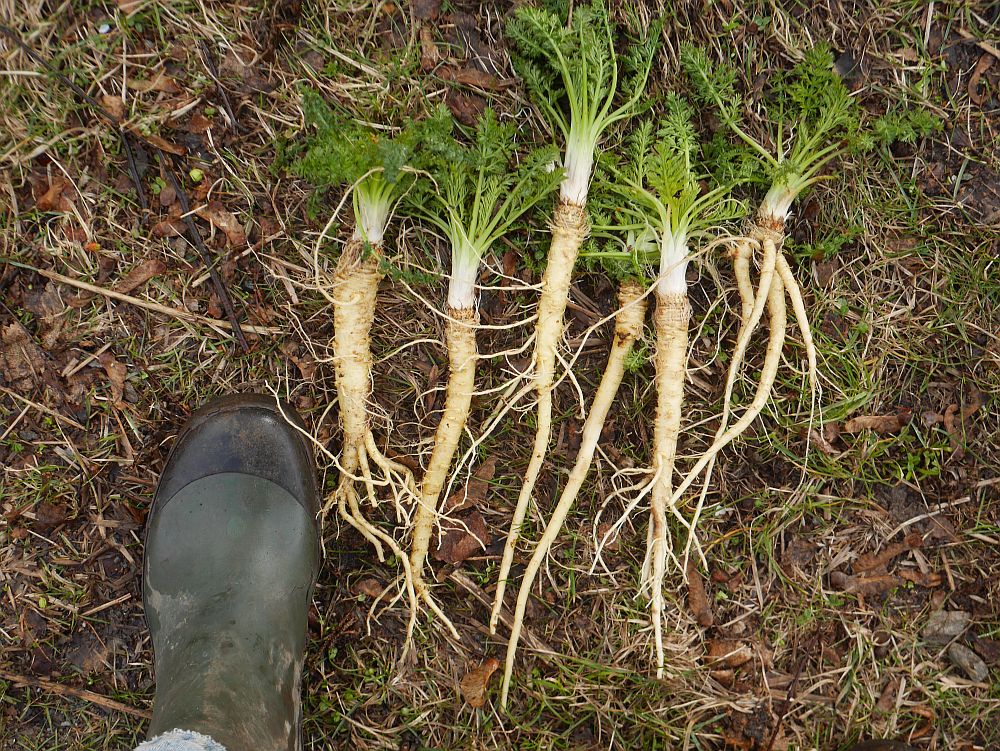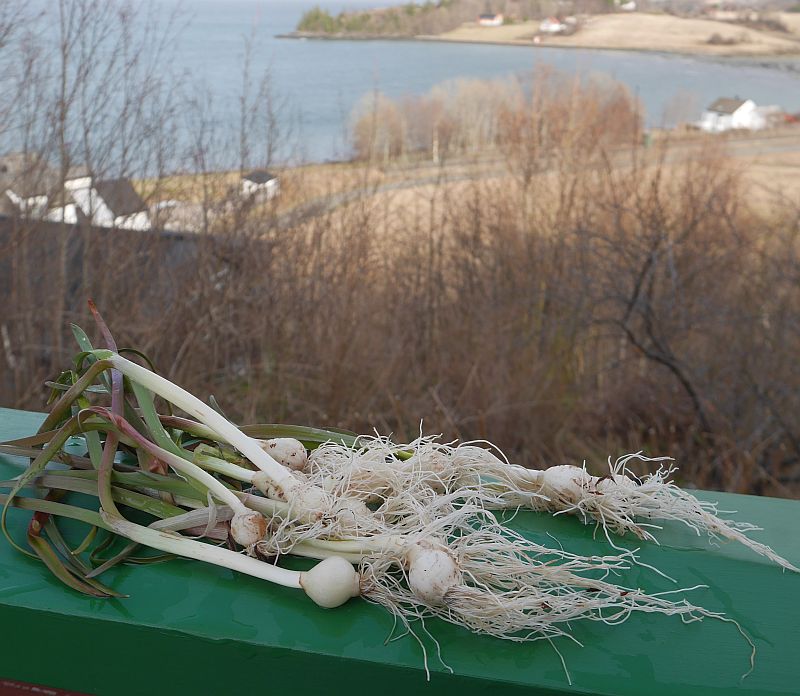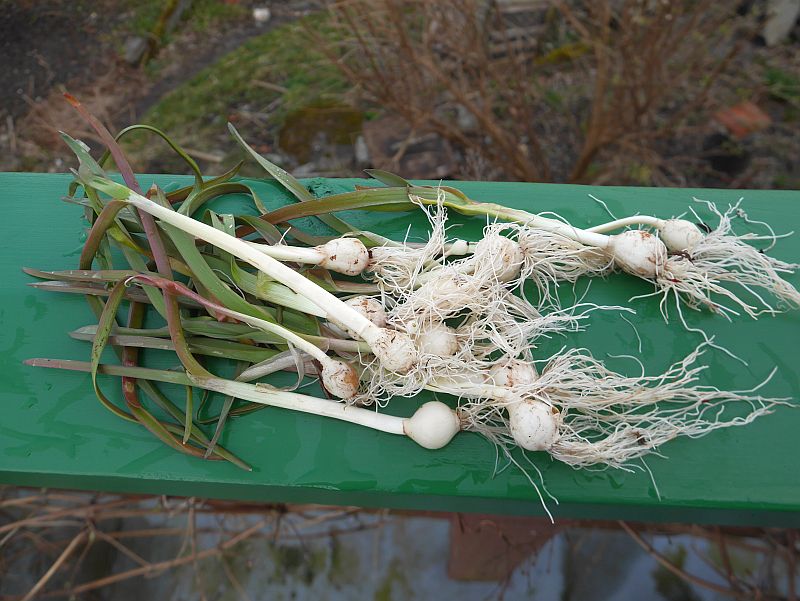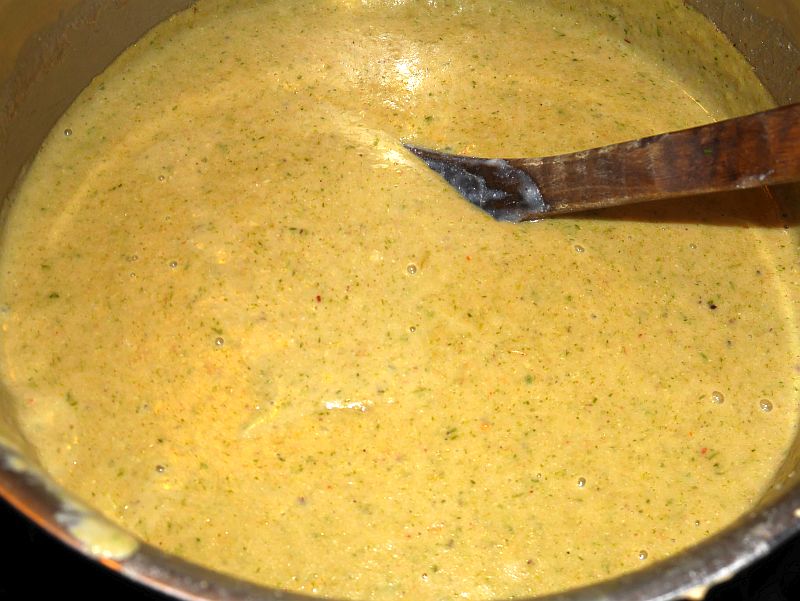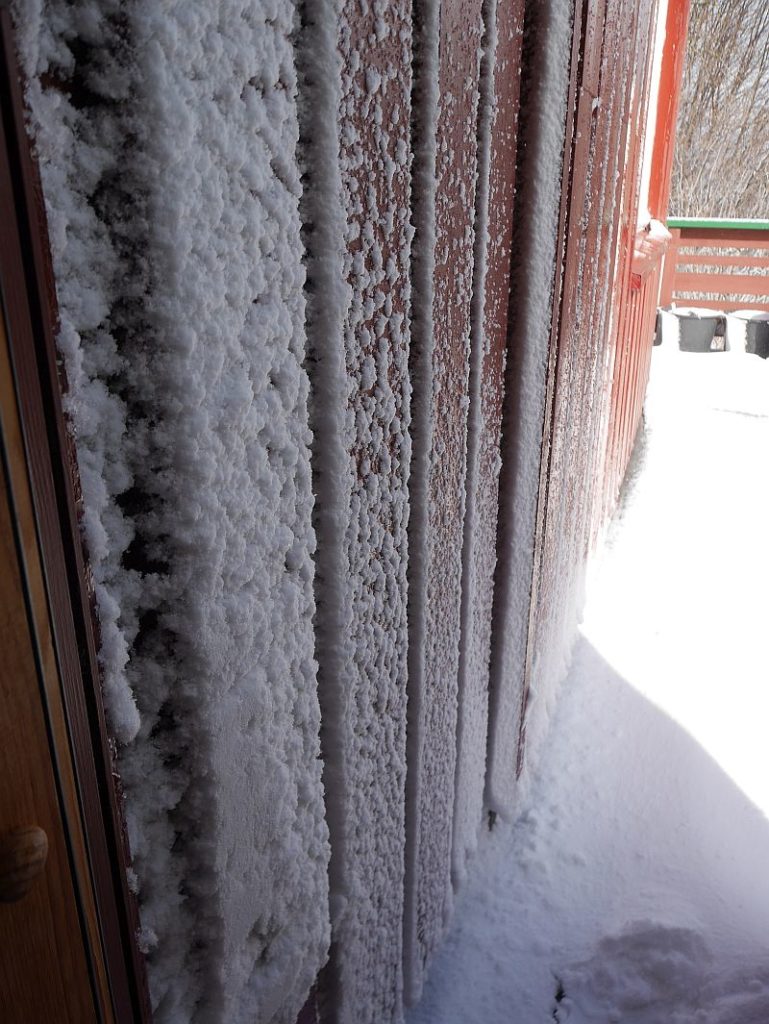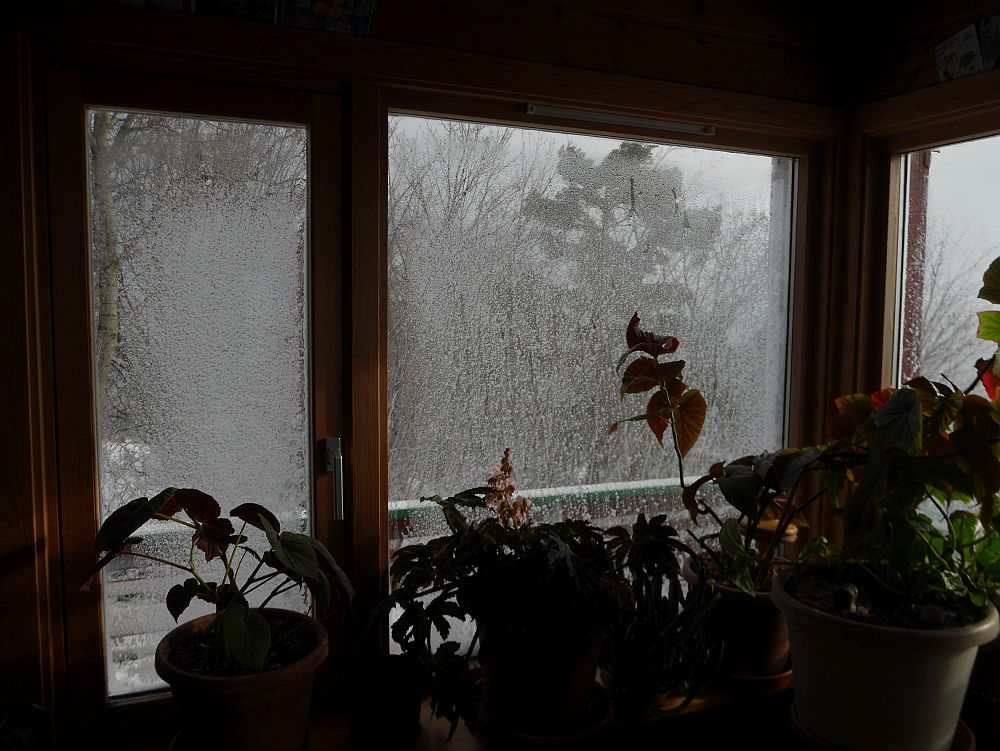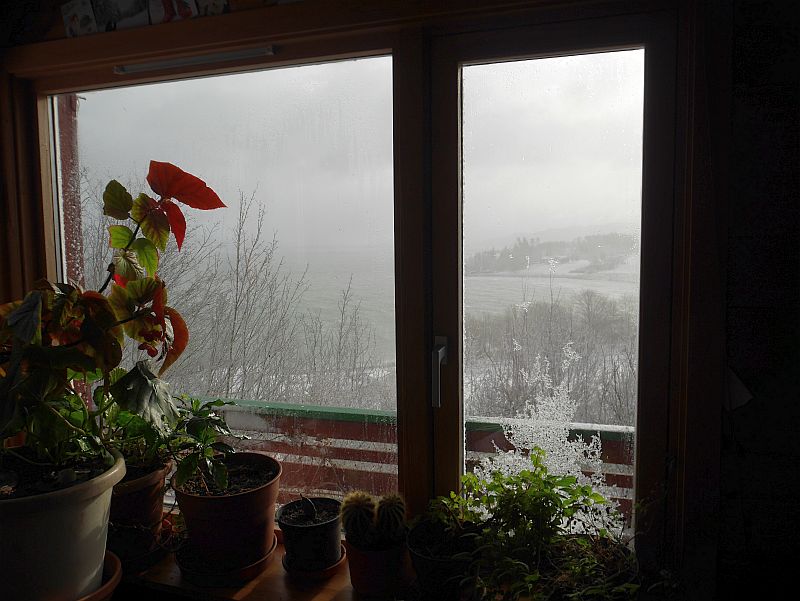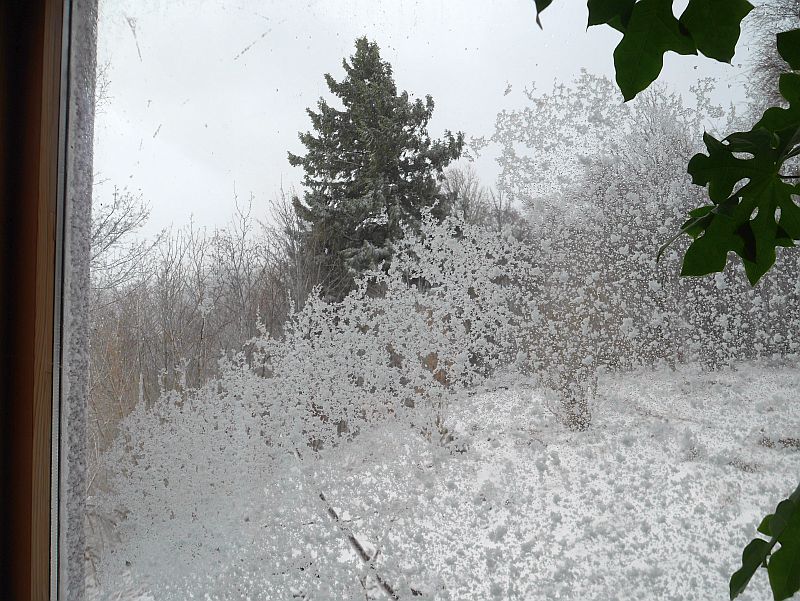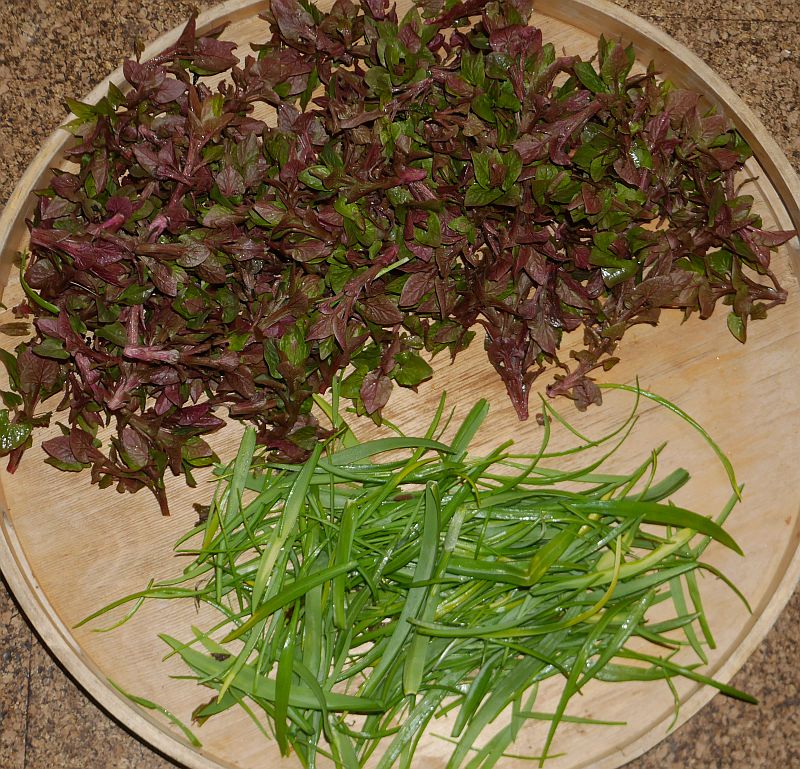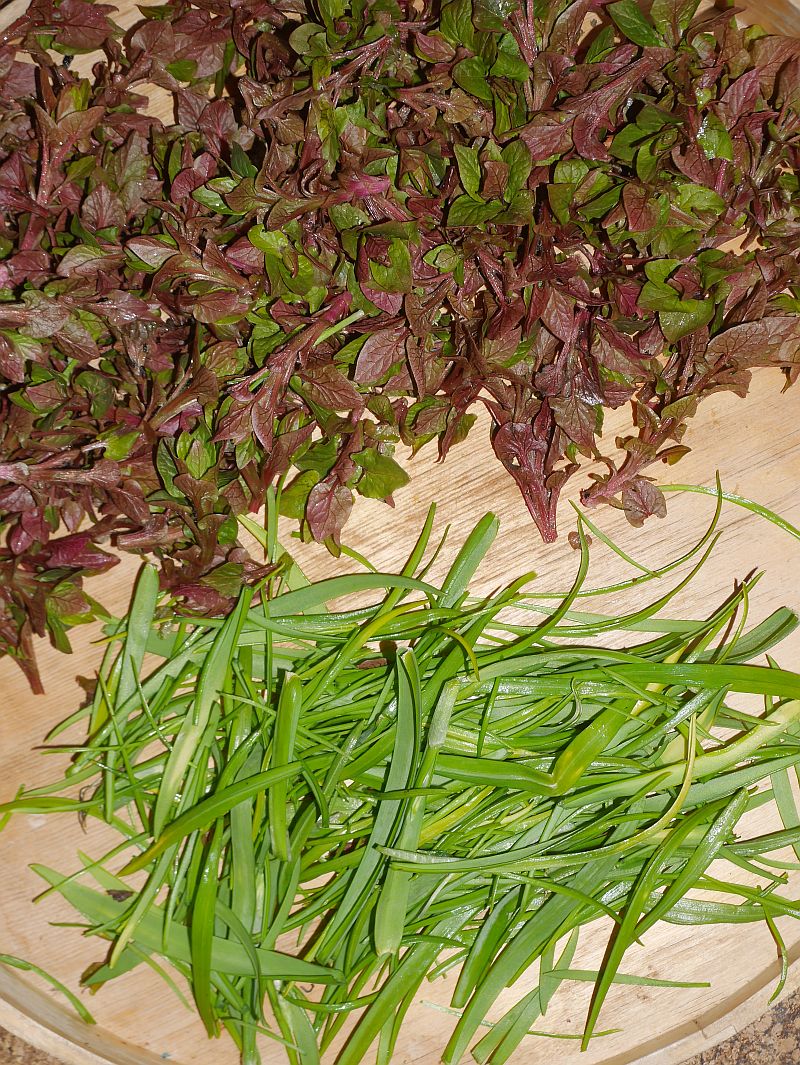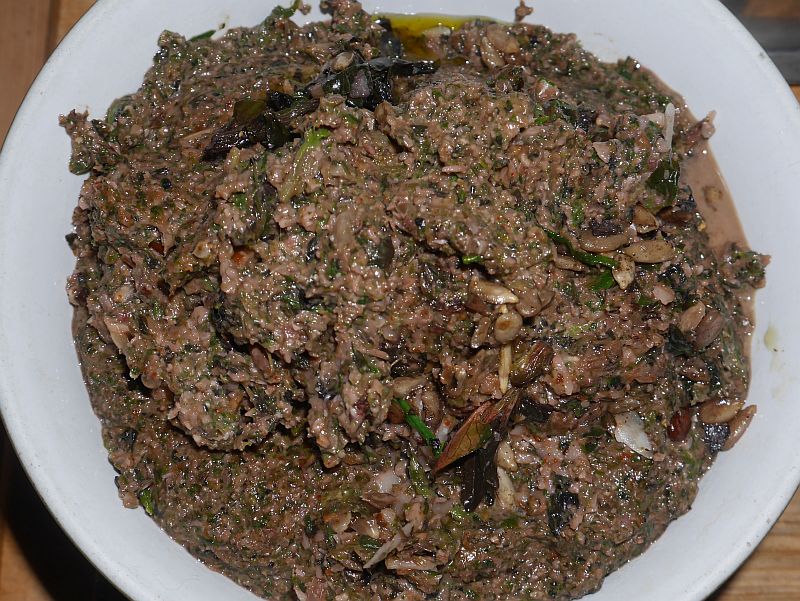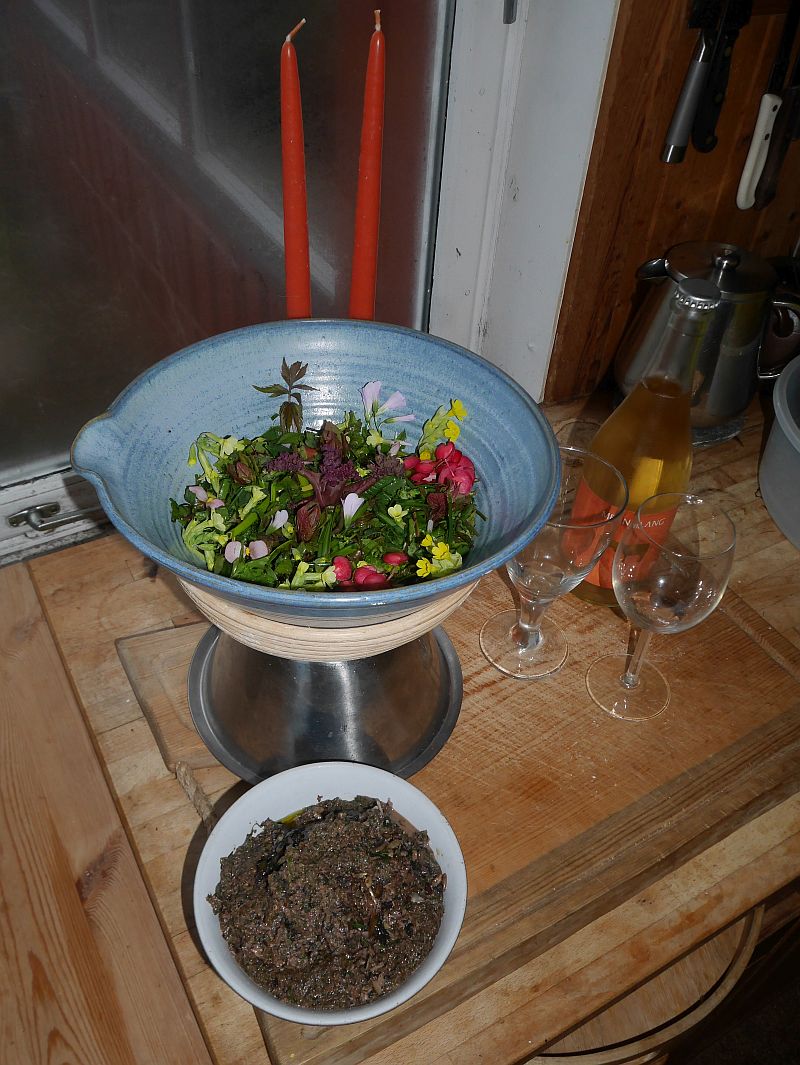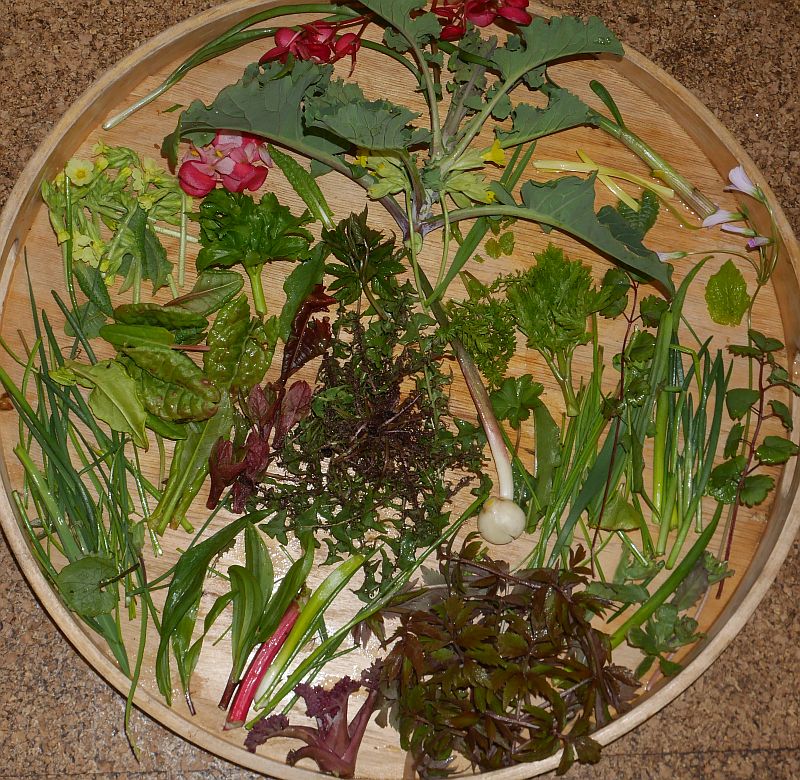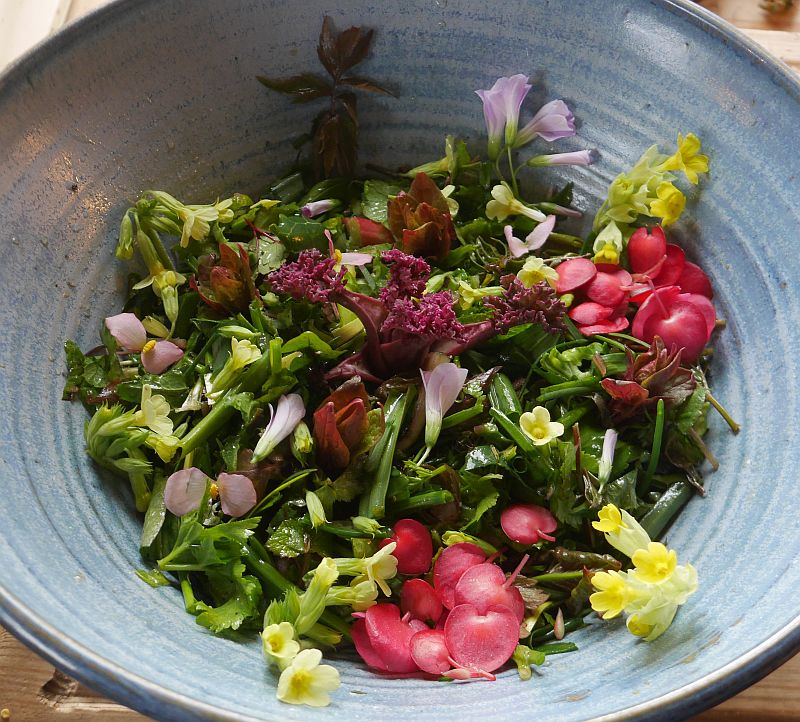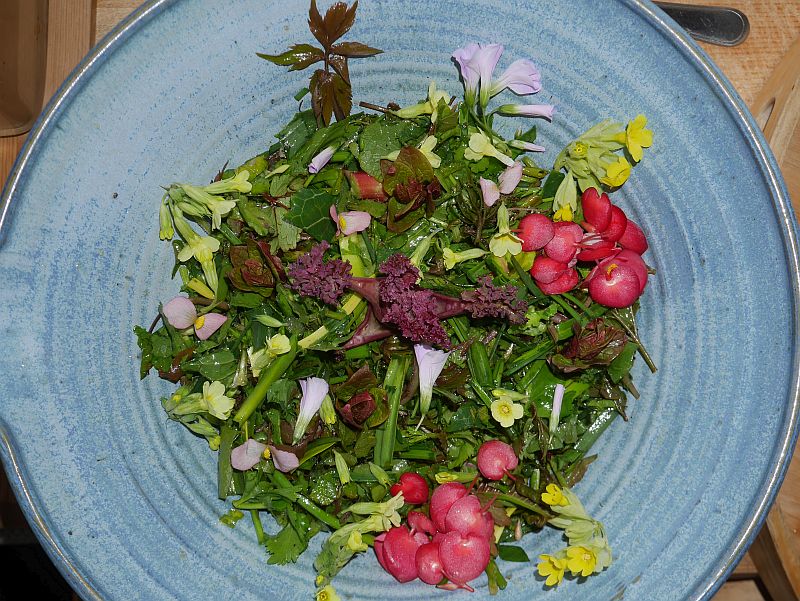Here’s two favourite companions of the edible woodland garden: Virginia waterleaf (Hydrophyllum virginianum) and the climber Caucasian spinach (Hablitzia tamnoides). The plant is for the waterleaf to gradually fill the gaps between the Hablitzia plants.

Monthly Archives: April 2020
Mass Victory Onion Germination
Mass germination around one of my victory onions /seiersløk (Allium victorialis). I’m not sure where this accession originates.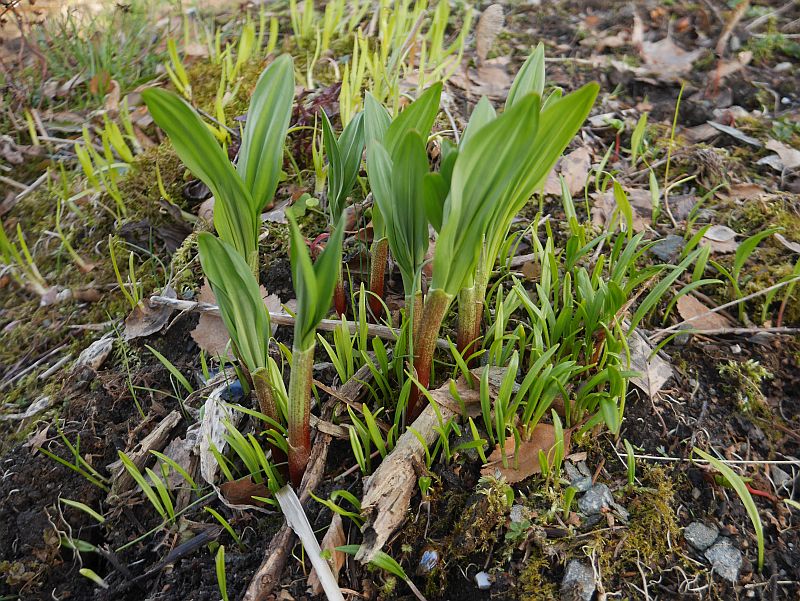
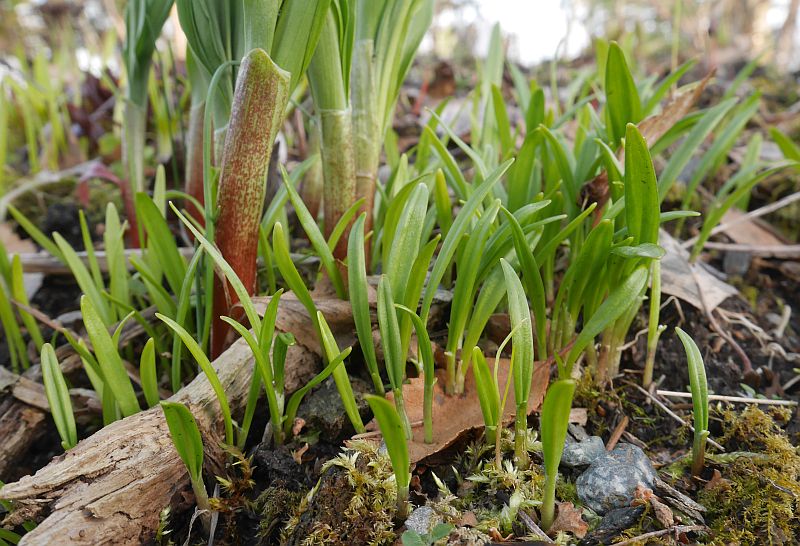
Caraway root breeding and Karvekaalsuppe
I’ve been selecting caraway (Carum carvi) through 4 generations now for larger roots. I plan to have a larger number of plants from next year at our community garden (Væres Venner). I selected 5 plants for seed yesterday and they were quite a decent size. The remainder with the greens were used in a delicious karvekaalsuppe (caraway soup) yesterday with sand leek / bendelløk (Allium scorodoprasum). I plan to offer seed from this selection in KVANN’s (Norwegian Seed Savers) autumn catalogue!
Trøndersk geirlauk: tilbake etter 1000 år på Island
English: This is the Norwegian version of the story I published in my book Around the World in 80 plants about a wild onion (Allium oleraceum) that was taken to Iceland and returned almost 1,000 years later).
Dette er historien om en viltvoksende løk, som kanskje er utgangspunkt for det engelske ordet garlic, som ble tatt til Island for snart 1000 år siden av en engelsk biskop og kom tilbake til Trøndelag til en annen engelskmann som jobbet med løk! Idag er denne løken å finne i den nye løkhagen på NTNU Ringve Botaniske Hagen i Trondheim ved siden av kanskje samme løk som ikke vandret til Island. Denne historien fortalte jeg om i min bok Around the World in 80 plants (se https://www.edimentals.com/blog/?page_id=30). En norsk artikkel er dessverre ikke lenge tilgjengelig på nettet. Artikkelen som kan leses nedenfor er tatt fra en større intern rapport fra en flerårig prosjekt “Innsamling og kartlegging av gamle matløk” som undertegnede gjennomførte, finansiert av Genressurssenteret.
Large Arrival
Following the blizzard like conditions over the last two days the low pressure system moved away eastwards and a high pressure ridge with light winds built up over Norway last night and there was a light drizzle and just above freezing this morning. I sat down at my desk with the fire going and window open and very soon I heard what I had been expecting…redwings (rødvingetrost) started singing and calling just outside the window right on schedule for their mid-April arrival time slot! Then, a bit later I spotted a song thrush (måltrost) foraging, later redwings were foraging on the ground and two dunnocks (jernspurv) also appeared, unusual to see this shy bird, no doubt also newly arrived. There was only bare ground near the fjord this morning, concentrating the birds hungry for some food….
Dramatic Spring Days
You appreciate the sunny spring days much more when you have a couple of days of blizzards in between….our resident robin, blackbird and
chaffinch were back singing today! First the day train to Bodø passing.
The paradoxical habby pesto
Last night’s Hablitzia tamnoides (Caucasian spinach / stjernemelde) and Allium paradoxum pesto was of course delicious with golpar (Heracleum spice), garlic, chili, sunflower seeds, parmesan, salt and pepper.
The year’s first extreme salad
Half an hour “foraging” in the garden and half an hour in the kitchen and I can present the year’s first multi-species salad….54 different plants! Notable additions were dark-leaved sea kale (strandkål) and Hydrophyllum virginianum (at the bottom), moss-leaved dandelion and Hablitzia tamnoides (centre). Edible flowers included two begonias and Oxalis triangularis (grown inside) and the first oxlips and hybrids (hagenøkleblom)
The mossy dandelion
It’s 100 years since Vilmorin-Andrieux’s The Vegetable Garden: Illustrations, descriptions, and culture of the garden vegetables of cold and temperate climates was published! The plant I most associate with this fantastic book is what I’ve called “The Legendary Moss-Leaved Dandelion”. I fell in love with the image of this variety of dandelion when I first saw it (see below) and I later blogged about how I sought after and was finally able to grow it myself here: https://www.edimentals.com/blog/?page_id=1193
There was even a T-shirt printed in its honour (see https://www.edimentals.com/blog/?page_id=1043)
However, it was only yesterday that I discovered how mossy looking it can be in the early spring when I tried to clean moss away from the young dark leaves of a plant I was harvesting for a salad ;)
Naturalised Giant Bellflower
No doubt introduced by the previous owners here as an ornamental and despite the fact I spent a lot of time trying to eradicate it from parts of the garden, Campanula latifolia (giant bellflower / storklokke) is nowadays one of my most important springtime vegetables used both cooked and raw. It has naturalised under Hazel in part of the garden! Always nice to see how plants find their own way to the best spots it grows happily alongside Aegopodium podograria (ground elder / skvallerkål). See the excerpt from my book Around the World in 80 plants below.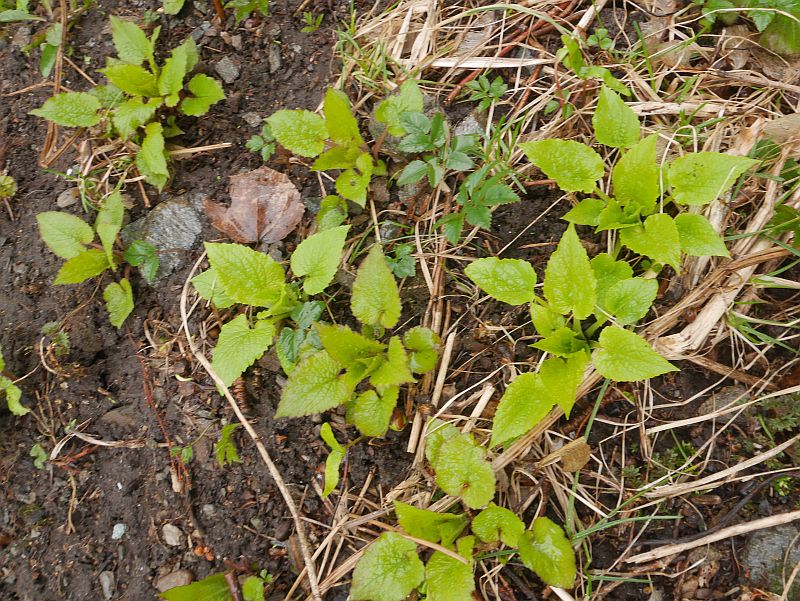
 Here is the excerpt from Around the World in 80 plants (I’m happy to send signed copies within Norway). “When I first moved to my present garden, there was one weed that I struggled to eradicate from my cultivated beds, Campanula latifolia or giant bellflower. The roots in particular were almost impossible to dig out, having a knack of germinating in the most difficult places. Then, one day I was reading the Norwegian book “Gratis Mat av Ville Planter (Free Food from Wild Plants; Holmboe, 1941). I learnt that my worst weed had been wild gathered for food by farmers in my area in the 17th century, a tradition which probably died out soon afterwards. The leaves and stems were collected in springtime and made into a soup. Similar stories have also survived from other parts of Norway and Sweden. Storklokke (literally large bell) is considered to be one of the most commonly used wild food plants in the past in Norway. Both the leaves and roots were used, the latter also ground and added to bread.”
Here is the excerpt from Around the World in 80 plants (I’m happy to send signed copies within Norway). “When I first moved to my present garden, there was one weed that I struggled to eradicate from my cultivated beds, Campanula latifolia or giant bellflower. The roots in particular were almost impossible to dig out, having a knack of germinating in the most difficult places. Then, one day I was reading the Norwegian book “Gratis Mat av Ville Planter (Free Food from Wild Plants; Holmboe, 1941). I learnt that my worst weed had been wild gathered for food by farmers in my area in the 17th century, a tradition which probably died out soon afterwards. The leaves and stems were collected in springtime and made into a soup. Similar stories have also survived from other parts of Norway and Sweden. Storklokke (literally large bell) is considered to be one of the most commonly used wild food plants in the past in Norway. Both the leaves and roots were used, the latter also ground and added to bread.”
It was the nephew of Bishop Gunnerus (after whom the genus Gunnera was named) who published this in Norway’s first flora published 3 years after the Bishop’s death! It was stated that “storklokke” deserves to be considered as one of the best springtime greens! I totally agree! Thanks to the previous owners (Johansen) for planting it for me!

